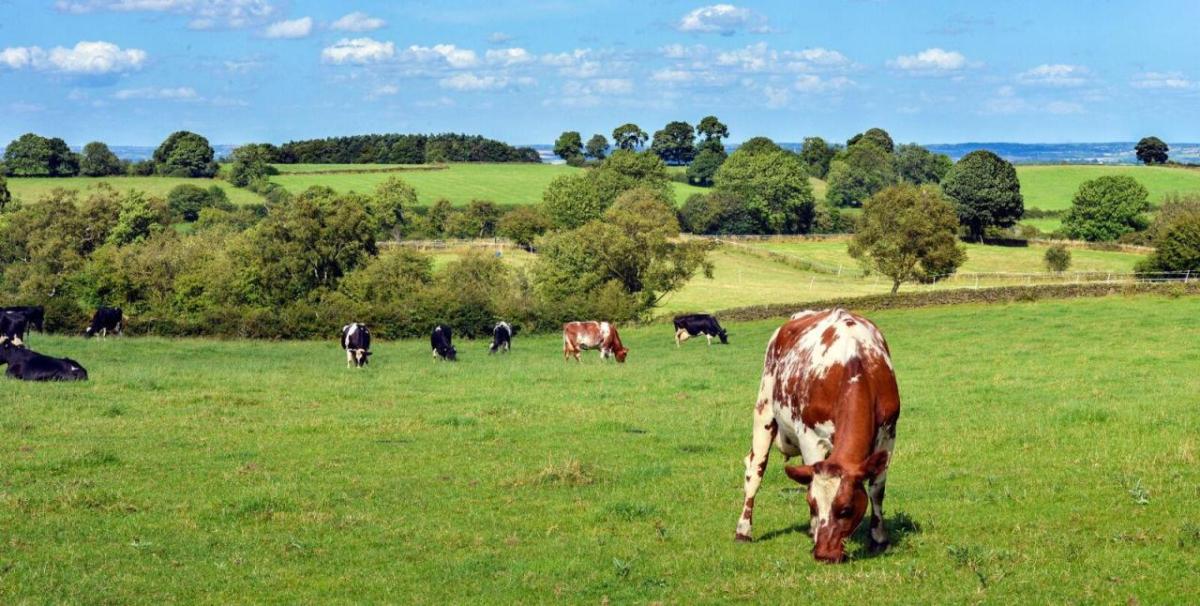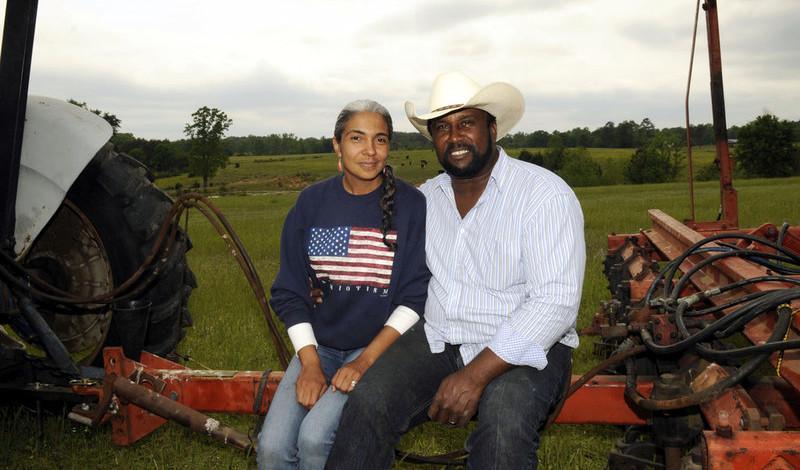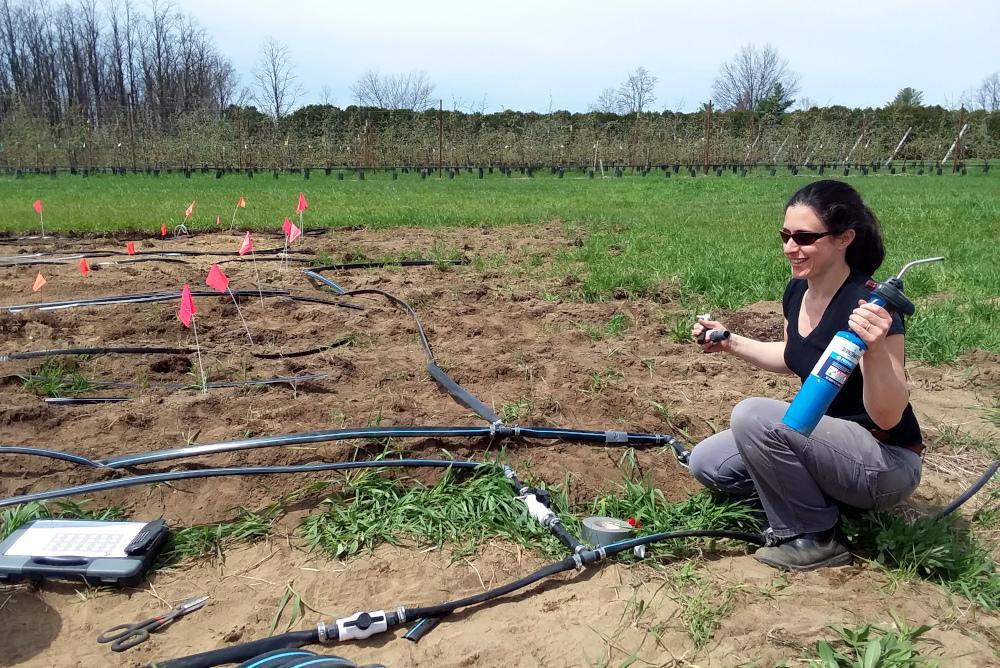Can Regenerative Agriculture Regenerate the US Food System?
Published 11-03-23
Submitted by Vanguard Renewables

The conversation recently made its way to Washington, DC — where the Environment Subcommittee of the House Committee of Oversight and Reform discussed calls to reform federal policies that unjustly favor corporate agribusiness, often at the expense of family farmers.
Can regenerative ag regenerate the US food system? Kara Brewer Boyd thinks so. The farmer and rancher of about 1,500 acres in Southside, Virginia is also a member of the Lumbee Tribe and founder and president of the Association of American Indian Farmers.
“Being an Indigenous person here in North America, I highly value food security and resilience — as we’ve always grown and produced food to feed our families, tribal communities and others,” she says.
Indigenous people were utilizing regenerative farming practices — from no-till and companion planting to crop rotations and pollinating buffer strips — well before many other segments of agriculture. And they have done so by making decisions with forethought of the next seven generations: “Take some, leave some; and there will always be some for future generations.”
As we reported a year ago, the agricultural community is taking a new look at these old practices in hopes that we can use nature’s proven, time-tested principles to help mitigate climate change and feed a growing population more sustainably.
The conversation recently made its way to Washington, DC — where the Environment Subcommittee of the House Committee of Oversight and Reform held a hearing about calls to reform federal policies that unjustly favor corporate agribusiness, often at the expense of family farmers.
Boyd was one of several farmers who testified. The benefits of regenerative ag are manifold, she said. It can take large amounts of carbon out of the atmosphere as well as build back soils, which can be depleted at a rate of 5.6 tons of topsoil per acre each year. It can restore water cycles and replenish underground clean water sources, lessening the impact of droughts and alleviating flooding. It can help hold nutrients in the landscape, thus preventing nitrates and phosphates from entering watersheds.
The gains are not just environmental, she added. Regenerative ag can make farming and ranching profitable by reducing reliance on inputs, making farmers less susceptible to shifting fertilizer markets. It can also help revitalize rural communities by diversifying farm production.
Building back soil health is the most cost-effective federal investment we can make at this time. From risk mitigation to farmer prosperity, to human health, to carbon sequestration — it is a win-win for all. To ensure local and national security in the face of domestic and global disruptions, we must make the effort to rebuild our soils.
Kara Brewer Boyd, Founder and President, Association of American Indian Farmers

Investing in soil
So, what level and type of investment is needed?
Boyd testified that farmers wishing to transition to more regenerative practices may struggle to do so. Small-scale farmers often face limited options for diversifying their operations and participating in local markets; and it may not be economically feasible to incorporate managed livestock grazing if there is no local processing or infrastructure.
“Without access to local processing, regenerative farmers and rural America don’t stand a fighting chance,” she said.
Rachel E. Schattman, Assistant Professor of Sustainable Agriculture at the University of Maine, agreed that a holistic approach is needed — supported and sustained by federal policy and investment and complimentary community and state resources.
“This means heavily investing in agricultural research, especially at land grant universities — including historically black colleges and universities and tribal colleges; and expanding education programs, technical assistance and financial assistance for farmers,” Schattman asserted.
She also emphasized the need for equity in the system.
“In addition to climate change being a matter of science, it’s also invariably a racial, gender and economic justice issue — as the negative effects of climate change will fall disproportionately on those who can least afford it,” Schattman asserted. “We must ensure that federal agriculture programs are available to all who steward the land.”
Boyd suggested that the USDA’s Environmental Quality Incentives Program (EQIP), which provides $1.2 billion annually to help farmers deliver environmental benefits, dedicate 80 percent of its funds to practices that rebuild soil health and ecological function, reduce emissions or sequester carbon — rather than the current ~20 percent; and that the Conservation Stewardship Program (CSP) be converted into a “Climate” Stewardship Program that primarily rewards good climate stewards and prioritizes support for small-scale farmers.
Rep. Ro Khanna (D-CA), Chair of the Subcommittee on Environment, said he was committed to supporting regenerative agriculture by listening to farmers and paying them for the practices that they think are best for their soil: “We must fully fund the USDA’s conservation programs and reform them to provide farmers more flexibility to do what they think is best, as opposed to being dictated by corporate executives who may have no actual experience in farming.”

Sustainable solutions
Rep. Ralph Norman (R-SC) expressed his concern that farmers be burdened with additional regulations and bureaucratic red tape.
“We need to let farmers farm, not shoulder them with burdensome regulations and huge tax bills. As most farmers tell me, get the bureaucracy, get big government out of the way and just let them do what they were born to do,” Norman said.
Brian Lacefield — Executive Director of the Kentucky Office of Agricultural Policy and a former university extension worker, banker and crop input retailer — noted that there will be no one-size-fits-all solution; and that practices must be sustainable, both economically and agronomically.
Kentucky farmers have been pioneers and early adopters of conservation and regenerative practices, he said, with terrace and no-till farming practiced commercially for decades. A further shift took place in 1998, when the Tobacco Master Settlement Agreement prompted the diversification of Kentucky agriculture — with tobacco producers declining from 50 percent to 1 percent.
Part of this was achieved through elective incentives — such as a menu-based cost-share program covering investment areas such as beef improvement, forage quality, technology and markets. Each producer can find items suited to their operations that are based on research and best management practices; and there is a producer education component, as well as a requirement to have a water quality plan.
Many of the items available for cost-share participation are consistent with several of the principles of regenerative agriculture — including enhancing and improving soil health, improvement of water quality, and optimization of resource management. It is a purely optional plan and great distinction has been built in to be the ‘economic carrot’ as an incentive to a best management practice and not a subsidy.
Brian Lacefield, Executive Director of the Kentucky Office of Agricultural Policy
Another novel solution is OpenTEAM — a collaborative effort to create an interoperable, open-source agricultural technology ecosystem that supports farmers in their transition to regenerative ag systems. Started in 2019, the farmer-driven community of farmers, ranchers, scientists, researchers, engineers, farm service providers, programmers and food companies is creating a suite of tools to help land stewards manage soil health, optimize data collection, and share knowledge across an ever-expanding network.
At several research & development sites, ranchers and farmers are informing the development of these tools. Stonyfield Organic, for example, is working with organic dairy farms in its direct supply chain to test the use of tools such as PastureMap to track rotational grazing and pasture forage, and SoilStack to measure carbon levels in the soil with a handheld spectrometer.
Monthly grazing discussion group meetings with both technical experts and fellow Stonyfield farmers enable OpenTEAM participants to learn how to utilize the data and observations they are collecting to create positive changes on their own farms and the climate at large. Projects such as the Digital Coffeeshop — which is being developed by another OpenTEAM participant, Our Sci — and an embedded social coordination platform will allow participants to benchmark and compare their data to better understand what might be considered a ‘good’ result.
Bourne is also excited about development of the OpenTEAM Ag Data Wallet — a central data-storage platform that aims to streamline data collection. The goal is for farmers to enter data once and be able to leverage that data for multiple uses — including GHG accounting, organic certification, and eventually for ecosystem service markets.
The hope is that OpenTEAM’s open-source technology ecosystem will also help increase equity in access to knowledge and markets. Currently, tools to measure and monitor soil carbon and other ecosystem services are expensive; and in many cases, are not developed with a diversity of farmers and farm systems in mind, she added.
These farmers have always managed their land to support animal and soil health outcomes; but changing pasture management to increase soil carbon sequestration, specifically, is less familiar. The Digital Coffeeshop will allow the producers to search the system — filtering to determine ‘where are farms like mine?’ according to things like herd size, region or soil type; then reach out to learn what those farms have been doing differently to improve soil health. It’s a new way to build peer learning.
Dana Bourne, Sustainable Agriculture Manager at Stonyfield

Vanguard Renewables
Vanguard Renewables
Vanguard Renewables, based in Weston, Massachusetts, is a national leader in developing food and dairy waste-to-renewable energy projects. The Company owns and operates on-farm anaerobic digester facilities in the northeast and currently operates manure-only digesters in the south and west for Dominion Energy. The Company plans to expand to more than 150 anaerobic digestion facilities by 2026. Vanguard Renewables is committed to advancing decarbonization by reducing greenhouse gas emissions from farms and food waste and supporting regenerative agriculture on partner farms through anaerobic digestion. Vanguard Renewables is a portfolio company of BlackRock Real Assets. To learn more about the Company, its energy partners, and the Farm Powered Strategic Alliance, visit www.vanguardrenewables.com
More from Vanguard Renewables

